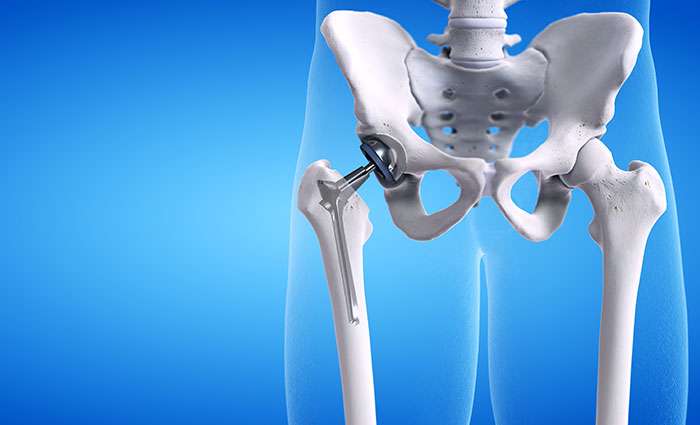Why Hip Replacement Surgery? A Complete Guide to Know
For many people, hip pain is not just discomfort — it’s a daily obstacle. It means struggling to get out of bed, dreading the stairs, avoiding evening walks, and sometimes even losing sleep. At Adam Vital Hospital, we often meet patients who say the same thing: “I tried medication, I tried physiotherapy, but the pain just won’t go away.”
That’s when the conversation naturally turns to hip replacement surgery. But before deciding, most patients have questions. Here are the ones we hear most often — and the answers that matter.
Q: What exactly is hip replacement surgery?
A: Hip replacement surgery (also called hip arthroplasty) is a procedure where a damaged hip joint is replaced with an artificial implant. Think of it as replacing worn-out parts in a machine so it can work smoothly again. The implant is designed to mimic the natural function of the hip, restoring mobility and relieving pain.
Q: Why would someone need hip replacement surgery?
A: The most common reason is arthritis. Osteoarthritis, rheumatoid arthritis, or post-traumatic arthritis can all wear down the protective cartilage in the hip joint, causing severe pain and stiffness. Other reasons include:
Fractures that don’t heal properly.
Bone conditions like avascular necrosis (where bone tissue dies due to lack of blood supply).
Age-related wear and tear.
When conservative treatments — medication, injections, physiotherapy — no longer help, surgery becomes the logical next step.
Q: How do I know if it’s time for hip replacement?
A: It’s usually time when pain starts dictating your life rather than you living it. Signs include:
Chronic hip pain even at rest.
Difficulty walking short distances.
Needing support (like a cane) to move.
Reduced range of motion that makes everyday tasks — tying shoes, getting into a car — a struggle.
Sleepless nights due to hip discomfort.
At Adam Vital Hospital, we evaluate each patient carefully. A knee replacement surgery is recommended only when quality of life is seriously impacted.

Q: What happens during the surgery?
A: In simple terms:
The damaged bone and cartilage are removed.
The joint is replaced with a prosthetic made of metal, ceramic, or high-grade plastic.
The new joint is positioned carefully to replicate natural movement.
Depending on the case, it can be a total hip replacement (both sides of the joint are replaced) or a partial replacement. Advances in minimally invasive techniques mean smaller cuts, less pain, and faster recovery.
Q: What is recovery like?
A: Many patients are surprised by how quickly they get back on their feet. In fact, with modern techniques, some begin walking with support the very next day. Recovery usually involves:
A short hospital stay.
Physiotherapy sessions to strengthen muscles and restore balance.
Gradual return to normal activities within weeks.
Of course, full recovery can take a few months, but most patients report dramatic improvement in pain relief within days.
Q: What are the real benefits?
A: The benefits of knee replacement surgery go far beyond just walking without pain. Patients often say:
“I feel younger — I can climb stairs again.”
“I sleep through the night without pain for the first time in years.”
“I went back to playing tennis after a decade.”
Medically, the benefits are:
Restored mobility.
Pain-free living.
Improved posture and balance.
Protection against further joint damage and deformity.
Q: Are there risks?
A: Like any major surgery, hip replacement carries some risks — infection, blood clots, or implant wear over time. However, at Adam Vital Hospital, we minimize risks with:
Advanced surgical techniques.
Infection-control protocols.
Personalized rehabilitation programs.
Modern implants are highly durable, often lasting 20 years or more, making the procedure a long-term solution.
Q: Why choose Adam Vital Hospital?
A: Patients trust us for three reasons:
Expertise: Our orthopedic surgeons are internationally trained and highly experienced in joint replacement surgeries.
Technology: We use advanced imaging, navigation systems, and minimally invasive approaches for precision.
Care Continuum: Surgery is just one part. From pre-op counseling to post-op physiotherapy, we support patients every step of the way.
Q: Who has benefitted from hip replacement here?
A: We’ve seen inspiring transformations:
An elderly gentleman who could barely walk without a cane now enjoys morning walks with his grandchildren.
A middle-aged woman with hip arthritis who gave up dancing now attends her weekly dance classes again.
A retired athlete who suffered years of hip pain after an old injury is back to cycling — pain-free.
Each story reminds us that hip replacement surgery is not about adding years to life, but adding life to years.
Final Word
Hip replacement surgery may sound daunting, but for many patients it is the key to freedom from chronic pain and immobility. It is not just about a new joint — it is about regaining confidence, independence, and the ability to enjoy life again.
At Adam Vital Hospital, we approach hip replacement with precision, compassion, and a simple mission: to help patients move without pain. If hip pain has been holding you back, it might be time to take the step toward a stronger, more mobile future.
Comments
Post a Comment